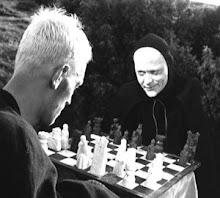""""On the coastal stretch of our local county road in Humboldt county, northern California, perhaps the irksome signs installed a few years ago alerting drivers and hikers that they were in a zone exposed to the risk of tidal waves would at last be of some use, though what precise use is hard to say. If there really was a tsunami of destructive size racing towards the shore, by the time you saw the sign and looked out to sea, you would be engulfed long before swerving uphill at McNutt and inland towards CounterPunch’s southern HQ in Petrolia.
The whole tsunami signage is locally derided as either a boondoggle or one more extrusion of the eco-panic convulsing the genteel classes, stretching from the Mayan calendar Apocalypse to the menace of flies flying into one’s latte, a pressing concern of the county Health Department, and requiring my neighbor Joe Paff – a coffee roaster – to install costly anti-fly barriers on his milk steamer machines. Of far more use would be alerts on the coastal stretch for wandering cows...."
However nauseating the no-nuke freaks seem at times, they had a point: had a quake of that magnitude occurred off the coast of California, at least four nuclear reactors would be ..toast, and the Golden state would be Chernobyl-ized.
Everybody wants to be a cat
In the event, so far as I could elicit from my current field HQ, in Indian Wells, southern California, is that in our neighborhood the tsunami was of modest dimension, even though coastal roads were blocked and the entire region on high alert. The town worst affected in northern California was Crescent City, which experienced an 8’ surge and considerable damage to boats, jetties and so forth.
Some surfers furtively deployed, excitedly awaiting the Big One. Not so long ago I was looking at youtube at some King of the Waves whose idea of fun is to get pulled out by a Zodiac and then put in the path of 50’ waves, at night.
As for the impact of an 8.9 I can barely imagine. We had a 7.1 in Petrolia in 1992, and that was a rolling surge through the ground that went on for what seemed like 30 seconds. I’m proud that by Friday morning this site already featured three excellent stories on the risks of nuclear disaster. Concerning the proximity of the large earthquake in Japan’s recorded history to nuclear reactors, Robert Alvarez writes,
“In the aftermath of the largest earthquake to occur in Japan in recorded history, 5,800 residents living within five miles of six reactors at the Fukushima nuclear station have been advised to evacuate and people living within 15 miles of the plant are advised to remain indoors.
“Plant operators have not been able to cool down the core of one reactor containing enormous amounts of radioactivity because of failed back-up diesel generators required for the emergency cooling….Early on Japanese nuclear officials provided reassurances that no radiation has been released. However, because of the reactor remains at a very high temperature, radiation levels are rising on the turbine building – forcing to plant operators to vent radioactive steam into the environment.”
Perhaps the news that Japanese nuclear reactors have been damaged and that clouds of official deception are already rising above them will cool the revival of enthusiasm for building new nuclear plants here in the US, spearheaded politically by President Obama and okayed by major green groups using the cover of alleged AGW, as long ago planned by the nuclear industry:


No comments:
Post a Comment